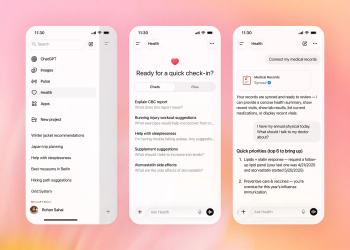
If telehealth is here to stay, why are we still treating it like a temporary solution?
Now that we have seen the long-term value of telehealth, it’s time to remake telehealth as a long-term solution.
Chances are, your healthcare organization (and probably every other one you can name) added or significantly expanded telehealth services within the past two years. In fact, if you can think of any that didn’t, those organizations may well not be in business any longer.
COVID-19 was the accelerant, and telehealth caught on like wildfire, playing two vital roles during the pandemic: virtual appointments allowed medical practices to maintain continuity of care with patients who would otherwise have been shut out of non-critical medical appointments; and deploying a telehealth strategy provided hospitals with vital revenue replacement for all those in-person visits that had to be canceled.
In the U.S., the Centers for Medicare & Medicaid Services (CMS) made the widespread scaling of telehealth possible by temporarily relaxing HIPAA and other key requirements governing telehealth platform security and service delivery. And while it’s unclear to what extent these changes will become permanent, healthcare organizations need to be thinking about how to transform telehealth from a temporary, bolt-on solution into an elegant, integrated extension of their existing health IT stack.
Global management consulting firm
Temporary Executive Orders that Allowed Telehealth to Flourish
Under the COVID-19 Public Health Emergency Declaration, the federal government relaxed certain regulatory requirements, which allowed telehealth to flourish. Principal among these was the
All of a sudden, platforms like Facebook Messenger, Google Hangouts, Facetime, Skype and Zoom were permissible for telehealth. What’s more, many text-based apps like WhatsApp, iMessage, Signal and Jabber made the list of acceptable telehealth platforms.
At the same time, CMS made it easier for providers to receive Medicare and Medicaid reimbursements for telehealth services by temporarily easing certain requirements. The
Medicare paid physicians the same rate for telehealth services as for in-person visits for all diagnoses, not just those related to COVID-19, throughout the public health emergency.
Patients could be in their home, or in any other setting, to receive telehealth services.
Patients would not need an existing relationship with the physician who is providing telehealth assistance.
Physicians were allowed to waive or reduce cost-sharing for telehealth visits.
Physicians who are licensed in one state were permitted to see a patient in a different state.
This combination of temporary changes was the equivalent of a physical store opening up an ecommerce channel; the store owner is no longer limited to a customer base that can walk in the front door. However, like early ecommerce platforms that lacked robust encryption for secure transactions, communications platforms that are not purpose-built for telehealth and HIPAA compliance are suspect and may leave sensitive patient data and/or provider-patient communications exposed.
We don’t know how long these temporary changes will remain in effect. On April 21, 2021, HHS extended the Public Health Emergency declaration, but there’s no clear guidance at this point on which provisions, if any, will be made permanent and when the temporary changes will expire. Providers need to be looking now for the right telehealth solution for the long haul.
What to Look for in a Long-Term Telehealth Platform
Instead of relying on a common, off-the-shelf communication tool for telehealth, healthcare organizations should think about telehealth platform functionality that will make a difference for patients and the clinicians who care for them:
HIPAA Compliance: First and foremost, the right telehealth platform needs to be engineered to facilitate and maintain patient privacy by being fully HIPAA-compliant. We’ve all seen or heard about enough examples of Zoom-bombing to know that the temporary expansion of the list of acceptable communications platforms to include non-HIPAA-compliant platforms is going to end sooner rather than later. Providers can’t be caught relying on a non-compliant platform when that window closes.
Patient Engagement: The right telehealth platform should be simple for the patient to access and navigate, requiring nothing more than a web browser. It should also include support for patient access on mobile devices. On the provider side, patient engagement means easy care coordination across the team of practitioners treating acute care needs as well as managing chronic care.
Clinician Workflow Support: The telehealth platform should operate as an efficient tool supporting clinician care rather than as an obstacle the clinician has to overcome in order to collect patient history, reach a diagnosis and develop a care plan. This means the platform needs to feature an intuitive user experience that simplifies coding and allows clinicians to capture patient data and record notes within the application.
Tight EHR Integration: One of the most important aspects of a sound telehealth platform is its ability to integrate with the patient’s electronic health record (EHR). EHR integration should allow the clinician to launch a telehealth session directly from within the patient’s record, automatically transfer all session notes directly into the patient’s chart, and capture a recording of the telehealth visit for future reference.
Revenue Cycle Management (RCM) Support: Equally important to patient- and clinician-facing features is the telehealth platform’s back-office support functionality. The right telehealth platform should not only simplify the coding process, it should integrate with the provider’s RCM program to simplify the billing process and accelerate receipt of payments.
The Changing Public Sentiment
It’s clear that the public wants telehealth to stick around.
If patients accept this modern form of care delivery and payers are cleared to come through on the revenue side, the next logical step is to help clinicians see that the right dedicated telehealth solution can make their jobs easier and more satisfying rather than contributing to the general frustrations they feel over obtrusive healthcare IT solutions that don’t put the needs of patients and practitioners first. This is the last hurdle to clear.
To do so, health care organizations need a telehealth program that will integrate with the other elements of the health care IT stack to become a tool that seamlessly supports the doctors, nurses and technicians who are working every day to bring the best possible outcomes to the most patients possible. Now that we have seen the long-term value of telehealth, it’s time to remake telehealth as a long-term solution.
Zeidan is co-founder and CEO of Azalea Health, a leading provider of cloud-based patient management and health IT solutions.
Newsletter
Stay informed and empowered with Medical Economics enewsletter, delivering expert insights, financial strategies, practice management tips and technology trends — tailored for today’s physicians.








